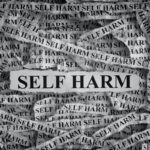
Millie Witcher and Sarah Rowe appraise a randomised controlled trial on the effect of low-intensity treatments for self-harm among people with suicidal ideation, which has some important findings.
[read the full story...]
Millie Witcher and Sarah Rowe appraise a randomised controlled trial on the effect of low-intensity treatments for self-harm among people with suicidal ideation, which has some important findings.
[read the full story...]
Holly Crudgington looks at a systematic review exploring the links between social media, cyberbullying, suicide and self-harm, which identifies a link between being victimised online and suicidal behaviour, thoughts and self-harm.
[read the full story...]
Yutung Ng reviews a cohort study exploring the links between loneliness, living alone and emotional support with suicidality and self-harm.
[read the full story...]
Amelia Talbot looks at a recent qualitative study of patient and carer perspectives, which explores the reasons why some patients do not receive a psychosocial assessment in emergency departments following self-harm.
[read the full story...]
Holly Crudgington reviews a mixed-methods analysis of electronic health records in secondary mental healthcare on harm minimisation for the management of self-harm.
[read the full story...]
Kirsten Barnicot summarises a recent systematic review of the factors associated with the course of ‘borderline personality disorder’ symptoms in adolescence.
[read the full story...]
In her debut blog, Amelia Talbot summarises a qualitative study investigating young adult’s experiences and perspectives of general practice care for self-harm.
[read the full story...]
Rachel Symons reviews a recent Italian study which finds that autism spectrum disorder is still commonly undiagnosed and misdiagnosed in adults.
[read the full story...]
Florian Walter reviews a recent cross-sectional study which investigates whether neighbourhood identification can buffer against the effects of socioeconomic disadvantage on self-harm.
[read the full story...]
In their debut blog, Rasanat Fatima Nawaz and Lauren Cross summarise a comprehensive review from the Early Intervention Foundation on school-based mental health interventions.
[read the full story...]